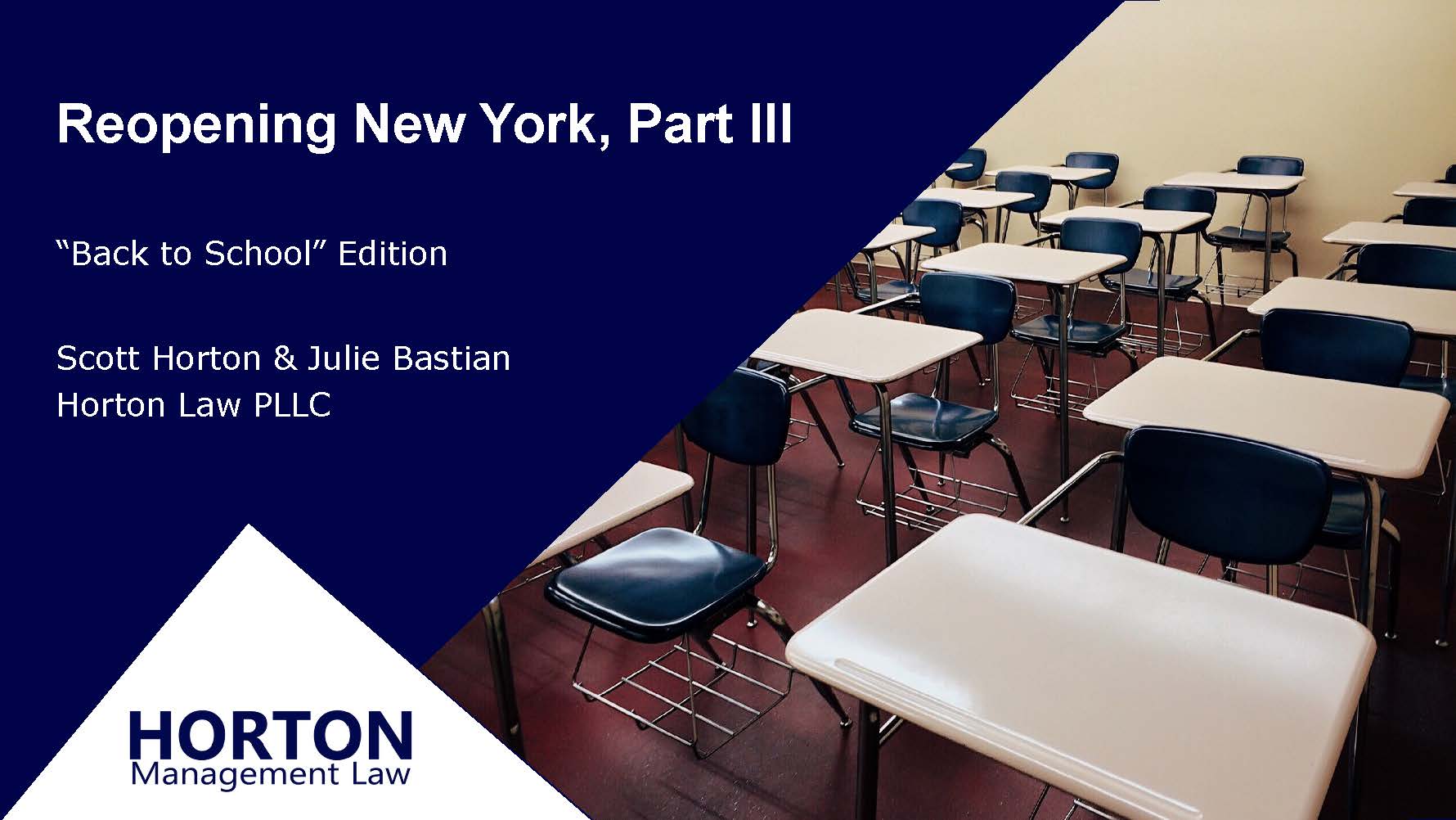The New York City Human Rights Law (NYCHRL) now imposes a higher burden on employers regarding workplace accommodations. Whereas most discrimination/accommodation laws rely on an “interactive process,” the NYCHRL requires employers to engage in a “cooperative dialogue” and issue a written determination. Learn more about this increased burden on New York City employers.
Reasonable Accommodations Under the New York City Human Rights Law
The New York City Human Rights Law prohibits discrimination in employment, housing, and places of public accommodations based on numerous protected characteristics. A few of the legally protected categories also afford employees rights to reasonable accommodations:
- Disability
- Religious beliefs
- Pregnancy, childbirth, or a related medical condition
- Victims of domestic violence, sex offenses, or stalking
Disability Accommodations
The NYCHRL defines disability as “any physical, medical, mental, or psychological impairment, or a history or record of such impairment, and includes a full range of sensory, mental, physical, mobility, developmental, learning, and psychological disabilities whether they are visible and apparent or not.” Employers in New York City must make reasonable accommodations for individuals with disabilities if they know of or should have known of the disability. However, employers do not have to make an accommodation that would pose an “undue hardship”.
Similar standards apply to accommodations based on the other protected characteristics above.
Cooperative Dialogue
Most other laws requiring employees to make reasonable accommodations, such as the federal Americans with Disabilities Act, envision an “interactive process” between the employer and employee.
Since 2018, the NYCHRL has imposed a higher burden on employees, requiring them to engage in a “cooperative dialogue” with an employee requesting accommodations.
The requirements of cooperative dialogue for employers include:
1. Learning of the employee’s need for accommodation;
2. Initiating a cooperative dialogue;
3. Communicating in good faith with the employee; and
4. Notifying the employee, in writing, of the employer’s determination regarding the accommodation.
The exchange between the employer and employee should adress
- the individual’s needs and considerations of potential accommodations,
- alternatives to a requested accommodation, and
- difficulties that the accommodation may pose to the employer.
Cooperative Dialogue Process
Under the NYCHRL, employers have an affirmative duty to engage in a cooperative dialogue even in some situations when the employee has not requested accommodation. For example, employers may have the responsibility to observe whether an employee’s performance at work has diminished because of a disability. If the employer reaches this belief, then management must initiate a cooperative dialogue with the employee.
The employer should not ask the employee whether they have a disability. Instead, management should ask whether anything is going on that the employer can help with and inform the employee of any available support, including reasonable accommodations. Once the employer engages in the dialogue process, the employee does not waive the opportunity to seek accommodation in the future if they choose not to reveal that they have a disability.
After the parties have engaged in the cooperative dialogue process, the employer must give the employee a final determination identifying any accommodation that was granted or denied.
Duration of Cooperative Dialogue
A cooperative dialogue is ongoing until one of the following occurs:
1. The employer grants a reasonable accommodation; or
2. The employer reasonably concludes that:
- No accommodation exists that will allow the employee to perform the essential requisites of the job;
- There is no accommodation available that will not cause it undue hardship; or
- A reasonable accommodation was identified that meets the individual’s needs, but the individual did not accept it, and no reasonable alternative was identified during the cooperative dialogue.
Good Faith Cooperative Dialogue
When evaluating whether the employer engaged in the accommodation process in good faith, the New York City Commission on Human Rights will consider various factors, including whether the employer:
- Has a policy informing employees how to request accommodations.
- Responded to the request promptly in light of the urgency and reasonableness of the request.
- Sought to obstruct or delay the cooperative dialogue or to intimidate or deter the employee from requesting the accommodation.
Employers violate the NYCHRL if they “refuse or otherwise fail to engage in a cooperative dialogue within a reasonable time with a person who has requested an accommodation or who the covered entity has notice may require such an accommodation.”
Written Determination
After engaging fully in a cooperative dialogue, the employer will decide whether to provide an accommodation. Management must then notify the employee in writing of the determination. After receiving the determination, the employee can continue to make new accommodation requests. In that case, the employer must re-engage in a cooperative dialogue.
What Should Employers Do?
Employers in New York City must comply with these cooperative dialogue requirements in any case where an employee may have a right to a workplace accommodation. Failure to do so is a standalone violation of the NYCHRL.
New York businesses should review the employee policies and procedures to ensure compliance with this relatively new and unusual obligation. Supervisors must understand these requirements and the appropriate way to engage in a cooperative dialogue. Or at least when to make a referral to someone who will handle this process (e.g., human resources).
For more articles and updates of interest to New York employers, subscribe to our newsletter and follow Horton Law on LinkedIn.


